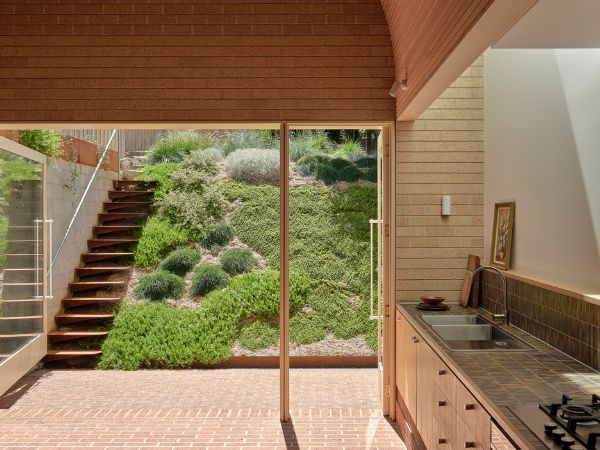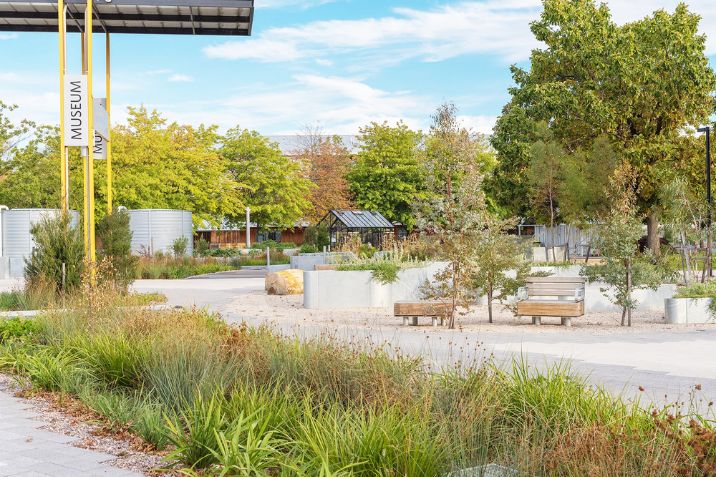The Australian Institute of Landscape Architects (AILA) has announced the winners of the 2023 Tasmanian State Awards, with seven projects victorious across a number of categories and sectors.
Playstreet’s Kingston Park (pictured top) took out the Parks and Open Space category. The sprawling parkland connects the Kingston CBD to Whitewater Creek and was cited by the Jury as having excellent connection to Country.
“(The jury) commends Playstreet for rooting their design process in deep collaboration with the Tasmanian Aboriginal community, artists and the broader local community,” the Jury statement reads.
“The result is a park that skilfully connects into a broader network of open space, responding to the history and culture of the place. A clear visual harmony ties nine distinct age appropriate play spaces together, allowing for joyful exploration and immersion within a distinctly Tasmanian landscape.”

Playstreet were additionally victorious in the Play Spaces and Small Projects categories for their design of the Discovery Early Learning Centre and Harriet’s Garden (pictured above) respectively. Harriet’s Garden features the extension and invigoration of a Georgian cottage in Launceston by So: Architecture, with Playstreet devising an external area filled with Tasmanian native plantings devised as a living tapestry.
The plantations cascade down the slope in a variety of structural forms, textures and seasonally-changing colours, with planter boxes allowing for the plants to spill over and cover the brickwork over time.
“Harriet’s Garden is a wonderful example of landscape and architecture working together to create a thoughtful and beautiful home,” the Jury says.
“Each diverse space in this small garden has been carefully considered and executed, with plantings native to Tasmania designed for varying functional and microclimatic situations. Playstreet is commended on an outcome that is a lush, delightful and pervasive landscape presence, bringing character that is both unique and of its place.”
Inveresk Urban Realm (pictured below), designed by REALMstudios, was victorious in the Civic Landscape category. Its goals of reconnecting people to place at the University of Tasmania.
“REALMstudios has created a resilient precinct expressing spatial diversity that enables learning, experimentation, reflection, and social gathering,” the Jury says.
“The outcome is a people-oriented precinct measured through dynamic movement, key sightlines, deep wayfinding, activity points and social amenity.”

Fitzgerald Frisby Landscape Architecture’s delivery of the West Tamar Trails Strategy was the winner of the Regional Achievement Award. Prepared for West Tamar Council, the practice created a planning framework for the future creation of trails that focus on walking and cycling, promoting an active lifestyle.
Jury Chair Naomi Barun says that all the winners demonstrate the abilities of outstanding landscape architecture has on the health and wellbeing of Tasmanians across the island state.
“This year’s entries demonstrated some big learnings across the industry in cultural engagement and value,” she says.
“There was a real maturity both in the engagement and respect that landscape architecture practices had for Traditional Owners, and the cultural connection they have with these places. This is a clear reflection on the advocacy and leadership of landscape architects in this space and the acceptance and willingness of clients,” Naomi says.
“Projects in this year’s program were applauded for their painterly approach in the use of plants in the balance of the beauty and the applied science of horticulture. This enabled an expression of seasonality, time, and a visible rendering of the ecological systems.”
All winners from the state awards level now automatically progress to the National Landscape Architecture Awards held later this year.
For the full list of winners, click here.

